Testing the new SCOTT Solace eRIDE gravel and road bike
The SCOTT Solace e-Ride has just been introduced and with it SCOTT opens another segment within its e-Bike division. It does so with two variants within the same model, a road and a gravel version, both with a similar geometry to the Addict model and designed for hours of riding.
Until now, if you wanted to have a bike with the same geometry dimensions as a conventional gravel bike, you had to go for an e-gravel with a motor on the rear hub, but now that has changed completely with the introduction of the Solace e-Ride. Having the TQ motor at the centre of the hub is a game changer and SCOTT has taken full advantage of it to develop an unprecedented e-gravel.

We test the SCOTT Solace e-Ride in a gravel environment
Once again we were in Massa Marittima. We went there to experience the presentation of the SCOTT Solace Gravel e-Ride, but it didn't come alone, we also met the road version, which we were able to test the next day.
Over the course of three rides spread over two test days, we were able to see first-hand how the SCOTT Solace e-Ride performs in different terrains and situations, while enjoying the scenery and sunsets of Tuscany, Italy.
RECOMENDADO

The best apps for cycling and mountain biking

Black Friday 2025 cycling bargains: save on Garmin, POC, Maxxis and more

Black Friday Garmin 2025: the ultimate guide to choosing your GPS at the best price

Which profile wheels to choose according to the area where you live: mountain, flat or coast

How to wash your cycling clothes? 10 keys to make them always look new

Cycling can help you fight the effects of the time switch
If we already thought it was a spectacular place to practice MTB, the roads and the gravel terrain did not disappoint any of the attendants.
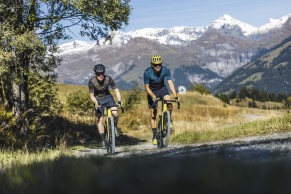
The models we had the chance to test were the SCOTT Solace Gravel e-Ride 10 and the SCOTT Solace e-Ride 10, the two top of the range models in the brand's catalogue, two e-Bikes that will undoubtedly make a name for themselves in their respective segments.
Faster than expected
The first session at the controls of the Solace Gravel started after midday with some slight adjustments to saddle height and tyre pressure. The terrain wasn't too tough in terms of climbs and elevation gain, but it was quite varied.
We took the road with a happy pace right from the start. From the very first moment we were surprised by the way it launched despite still having the assistance off. The frame, components and electrics are very light and this is transmitted in the form of speed. A speed that is not typical of bikes that are meant to spend hours on the road.
After only a few kilometres on it, it felt like we had been riding it for a lifetime. It is very easy to adapt to the Solace. The position on it is more racing than you might expect from a gravel/endurance bike, but it's not uncomfortable or awkward at all. In fact, as we say, it only took us a few minutes to get used to it.
The essence of Addict Gravel is evident
SCOTT has taken the Addict Gravel and its geometry as a reference. The flagship model in the SCOTT gravel catalogue. If something works, it's just a matter of adapting it. As we said, we found the geometry to be more racing than we expected from the Solace. However, the numbers are very balanced and that is noticeable in the performance.
The 71° head angle on the size M and a 10 mm longer wheelbase gave us stability and control on the most difficult terrain. The longer wheelbase is due to the fact that the chainstays have grown by 10 mm to optimise weight distribution and accommodate 50C tyres.
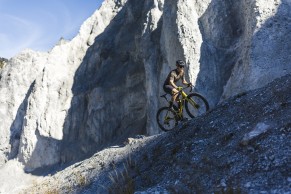
A 387 mm reach, longer than usual for this type of bike, is combined with shorter stems for a comfortable riding position and good performance. This is coupled with a 73.5° seat tube angle to ensure good pedalling power transfer.
All in all, a balanced geometry, which seemed to us to be halfway between a fast gravel bike and an adventurous gravel bike.
Manageability in all situations
The first trails were quite a surprise for us, we had no idea how easily it could move on terrain more suitable for mountain biking. The Schwalbe G-One Overland EVO tyres in 50C width give extra support and comfort. They're more suited to off-road than tarmac, yet they're not a drag to ride on.
We did several stretches of narrow, twisty trails, where its manoeuvrability was evident in the slower, twistier areas. This is where the work behind the TQ motor is most noticeable, as its power delivery is very subtle and doesn't interfere with our riding.
SCOTT has given a different set-up as standard for this bike. Unlike the e-MTB, the Solace does not require a strong pedal stroke to negotiate more complex obstacles. In this case a smoother power delivery has been chosen, which hides the electric assistance.
Of course, there are three assistance modes and although ECO mode was the most used on our routes, we always knew we had MID and HIGH to get us out of any trouble.
Absolute silence
The three levels of intensity are very quiet, a characteristic that stands out in TQ motors above any other on the market. In our tests of the Lumen we told you how the almost imperceptible noise it emits when running was amplified by the volume of the seat tube, necessary to house the shock. In the Solace, however, this area is thinner, helping to maintain the level of quietness.
Perhaps on gravel or road trails, the absence of engine noise is a little more appreciated. The tyres don't emit as much rolling noise as those of an MTB, so the fact that everything was kept quiet on our rides enhanced the experience.

Versatility is one of its strong points
On the second route we found a little more gradient and included some technical descents, without major complications. For the climbs it has a balanced gearing, with a 42T chainring and 44T sprocket, which might not be enough for a traditional bike on the most demanding climbs, but for the Solace it was more than enough with the help of the motor. Don't forget that although the assistance settings are softer, full power is still available in HIGH mode.
What really impressed us was the ease with which we could move it in the technical areas. It allowed us to face every downhill with confidence, and even go fast if we followed the right line. The 50C tyres helped absorb some of the unevenness of the terrain, an important factor in the Solace's setup.

On open tracks it allowed us to ride at high speeds comfortably. When the 25 km/h limit was exceeded and the motor cut the assistance, we were able to continue pedalling comfortably without feeling stuck, and it is even easy to increase the speed by a few more km/h.
Road version transmits confidence and highlights the benefits of the TQ engine.
The following day of testing was marked by the opportunity to test the road version of the Solace, it was something we didn't have in mind but taking advantage of the fact that they had several units we were able to go out and do some kilometres with it.
We faced a route with two medium-distance mountain passes, where we were able to see how the TQ motor worked in these situations. The road version maintains the same motor settings as the gravel version. The power delivery is sustained and in step with our pedalling, remaining stable if we don't vary the cadence. On road climbs, where any variation is easily noticeable, we look to move around the 25 km/h limit to check the input and output of the assistance. This aspect is well achieved by TQ and SCOTT, as it is done in such a natural way that we were riding over the limit without even noticing it.
Maintaining stiffness in the bottom bracket area was a challenge, as the frame in this area is virtually open to accommodate the motor. However, we can attest that this has been achieved with success. Continuing with the line of work of dividing the bike into two parts, one for comfort and the other for effort, they have managed to ensure that the lower part has stiffness values close to those of the Addict Gravel and this is noticeable when accelerating.

On the downhills it shows the confidence and poise with which it handles, coupled with 38C tyres made our descents fast and fun. It allows you to take risks in corners thanks to its handling, and knowing that you have extra support makes everything easier.
On the flat, it's a very good performer. It can give the impression of being slow because of the size of the tyres, but they have been combined with Zipp 303 Firecrest Carbon rims with a 40 mm profile to improve aerodynamics and minimise this resistance. Also, by not carrying it in too relaxed a position, it allows you to attach to the handlebars to reduce exposure to the wind.
Lightweight improves autonomy
As for the range of the 360 Wh battery, it is even more difficult to give an estimate for this bike, as in addition to the distance and gradient factor, the low weight and the possibility of pedalling with the assistance off come into play. The motor has hardly any drag and you can pedal at speeds of over 25 km/h without feeling like you are slowing down, which saves battery power. Even so, these models come standard with the 160 Wh Range Extender, which extends the range of the Solace by up to 50%. It is easily attached to the downtube without tools, and the extra weight is centred so as not to interfere with the riding feel.
When we used the Range Extender we could see how, once it ran out and switched to the internal battery, it was done automatically and all we felt was a similar sensation to when the motor cut in and out after reaching 25 km/h.
There is the possibility of making motor adjustments through the TQ App, so it will also be a factor to take into account when it comes to optimising consumption or maximising power, based on the route we want to do. From this App we can also change the order of the screens displayed or expand or reduce data fields, although we found the standard ones to be a good configuration.
Full integration
The integration of all components is now an established requirement for all new bikes that are launched on the market. In the case of the SCOTT Solace it is brilliantly integrated.
Everything is designed to achieve a clean aesthetic, keeping out of sight what we don't want to see. Not just the cable routing, which of course is internal throughout, both mechanical and electrical cables. Speed sensor, control screen, mudguard anchorages... everything is perfectly located and blends in with the frame.
It features TQ's Smart box system, located inside the top tube, which allows additional connectivity such as lights or the AXS battery to be added.
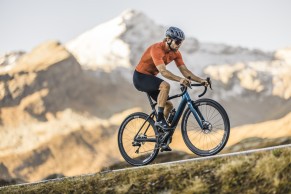
The cockpit formed by the Syncros Creston iC SL X is completely clear of any other components, but there is one thing we missed on the Solace and that is the lack of a remote control for the motor modes. It's something that we think would be easy to conceal anywhere on the handlebars and would mean we wouldn't have to drop a hand to change the assistance from the screen on the top tube.
Conclusions
The SCOTT Solace e-Ride is here to complement the experience of advanced gravel riders or even serve as an introduction for new riders.
It stands out for its manoeuvrability in twisty areas and the confidence it gives you on fast downhills or when the terrain becomes a little more complicated. It is not sluggish on climbs and will allow you to pedal with total naturality when you decide to use it without assistance or exceed 25 km/h.
It uses normal components, which allows you to configure it as you wish, and also gives you the possibility to change the wheels and use it on the road, although it also has a road version. It comes equipped with different attachment points for mudguards, lights or bikepacking accessories.
In short, with this Solace e-Ride, you can enjoy gravel or asphalt on a whole new level.
SCOTT Solace Gravel e-Ride 10 - Specifications
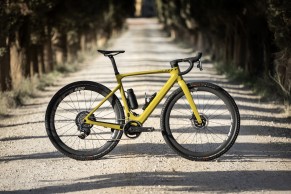
- Frame: Solace Gravel eRIDE Disc HMX.
- Fork: Solace Gravel eRIDE HMX.
- Cranks: SRAM X-SYNC, 42T 110 BCD.
- Rear derailleur: SRAM FORCE XPLR eTap AXS, 12v.
- Shifters: SRAM FORCE eTap AXS HRD Shift-Brake System.
- Brakes: SRAM FORCE eTap AXS, Flatmount, CenterLine XR 160 mm discs.
- Chain: SRAM FORCE
- Cassette: SRAM XPLR XG1251, 10-44
- Wheels: Zipp 303 Firecrest Carbon, tubeless disc-brake.
- Tyres: Schwalbe G-One Overland EVO, 700x50C
- Handlebar: Syncros Creston iC SL X, Carbon combo
- Seatpost: Syncros Duncan SL Aero
- Saddle: Syncros Tofino Regular 1.0 Cutout
- Motor: TQ HPR50 Mid Motor drive 50Nm max
- Battery: TQ Internal 360Wh + xTra Power Bottle Cage Battery 160Wh
- Display: TQ HPR, Bluetooth ANT+/ Dedicated Smartphone app
- Price:
SCOTT Solace e-Ride 10 - Specifications
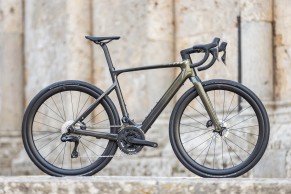
- Frame: Solace Gravel eRIDE Disc HMX.
- Fork: Solace Gravel eRIDE HMX.
- Cranks: FSA eBike 50-34.
- Rear derailleur: Shimano Dura-Ace Di2 FD-R9250
- Shifters: Shimano Dura-Ace ST-R9270.
- Brakes: Shimano BR-R9270, Flatmount, Shimano RT-CL800 160 mm discs.
- Chain: Shimano Dura-Ace CN-M9100-12
- Cassette: Shimano Dura Ace CS-R9200-12, 11-34
- Wheels: Zipp 303 Firecrest Carbon, tubeless disc-brake.
- Tyres: Schwalbe PRO ONE EVO Super Race, 700x38C
- Handlebar: Syncros Creston iC SL, Carbon combo
- Seatpost: Syncros Duncan SL Aero
- Saddle: Syncros Belcarra Regular 1.0
- Motor: TQ HPR50 Mid Motor drive 50Nm max
- Battery: TQ Internal 360Wh + xTra Power Bottle Cage Battery 160Wh
- Display: TQ HPR, Bluetooth ANT+/ Dedicated Smartphone app
- Price: